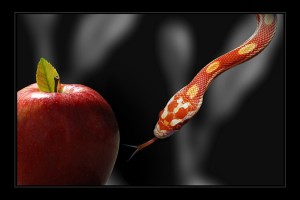
Okay, where were we? Ego fatigue. The empty-tank syndrome, losing your resolve when you’ve been trying too hard or for too long or both. The comment thread has been really valuable: Many of you know exactly what this feels like. And we seem to recognize that this phenomenon is critical when it comes to relapse.
The classic ego fatigue test was developed by a psychologist named Baumeister and published in a 1998 article in a standard psychology journal. He put hungry people into a room and left them alone with two bowls in front of them: a bowl of radishes and a bowl of chocolate-chip cookies. Half were instructed to have some cookies but no radishes; the other half were instructed to eat radishes only – no cookies. After only five minutes, the participants were asked to perform some cognitive tasks that require self-control. Those who’d had to resist temptation (cookies) performed more poorly or quit earlier. The interpretation was that they had “depleted” a resource needed for self-control.
In the same paper, another experiment was reported, one that’s at least as relevant. Participants watched a 10-minute video clip that was very emotionally arousing (either humorous or tragic). Half were asked to show no emotion on their faces, and the other half could behave normally. Those who had to suppress their emotions performed more poorly on subsequent tasks. Once again, something had been depleted.
These studies have the “toy” quality of many psychology experiments. But they seemed to tap something important. In the past 12 years, ego fatigue (or ego depletion) has been studied in many other labs, sometimes with very clever procedures and strong results. In the field of addiction research, there has been increasing recognition that ego fatigue is a serious problem for recovering addicts. But I’d say that those of us who have been addicts are the real experts.
If 5 minutes of resisting temptation actually lowers your cognitive control, what’s the impact of 5 hours? If 10 minutes of suppressing your feelings saps your cognitive reserves, imagine the impact of suppressing those feelings (deliberately and consciously) all day long, day after day. You know what I mean, and reader comments on the last two posts fill out many of the details. Rather than repeat them here, let’s move on.
Ego fatigue is not simple and it does not act in isolation. Many of us have expressed immense relief, triumph, or joy when we finally give way to temptation. At least for a while. Next post, I’ll write more about the “multiple personality” issue that I think is involved. For now, I want to mention one other psychological phenomenon that is joined at the hip with ego fatigue.
Delay discounting is the common finding that people (and animals!) will prefer an immediate reward of lower value to a later reward of higher value, even though there’s less overall gain. People who are naturally impulsive are the most prone. Delay discounting has a lot to do with dopamine’s short-sightedness. Dopamine enhances the draw of immediate goals, and that’s all it cares about. Your higher brain processes are supposed to look out for the future. So the dopamine rush of craving and the urgent pull of present opportunities are intimately linked in your brain. And the higher brain processes…well that’s the problem.
The following video, of kids in the “marshmallow test,” shows how agonizing it can be to fight present temptations.
This video also shows how we try to fight against delay discounting, especially when we know how DUMB it is to give in to immediate temptation (and when there’s a moral imperative to hold out). But what I really wanted you to see is the gyrations these kids go through, trying to resist. The whole task brings on massive ego fatigue for any 3-4-year old. It’s hard to keep resisting what’s right in front of you! And the ones who make it all the way sometimes seem to suffer most.
What’s different about the successful ones, if anything? They sniff it, fondle it, smell it, even kiss it, and then they look away. They scrunch up their little noses and they look away, or look down, or pretend it’s not there. That’s the point: they distance themselves from it, before ego fatigue overcomes them.
We addicts often “discount” the value of sobriety, because the payoff is in the future. Instead we break down and choose the immediate reward. We lunge for the marshmallow — sometimes after ego fatigue has already sapped our strength, and sometimes when we just want to skip the whole, familiar, gruelling process of self-denial.
But there is a way out. We can learn something from these 3-year-olds. Look away, look away. In fact, because we’re adults, we can go one better. Don’t just look away but get yourself out of the room, or out of the neighbourhood, or get the wine out of the house, before the “humming” takes over.
The 11th Commandment: Avoid temptation.
Leave a Reply